
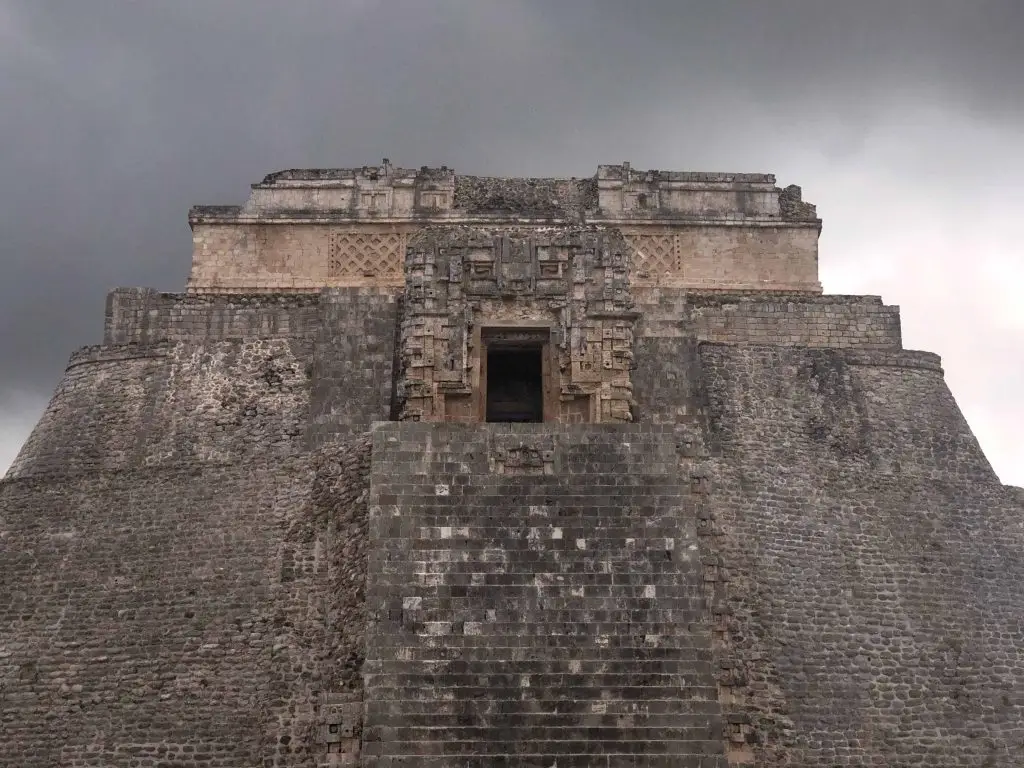
Monumental and monstrous, the Pyramid of the Magician measures about 35 meters (151 feet) in height making it the tallest structure at Uxmal. Although various reports range from as tall as 40 meters (131 feet) to as low as 27.6 meters (90.5 feet), the actual measurement is disputed. If either the Governors Palace or the Great Pyramid in Uxmal appear taller, it’s only because they are situated on higher ground and supported by artificial man-made platforms.

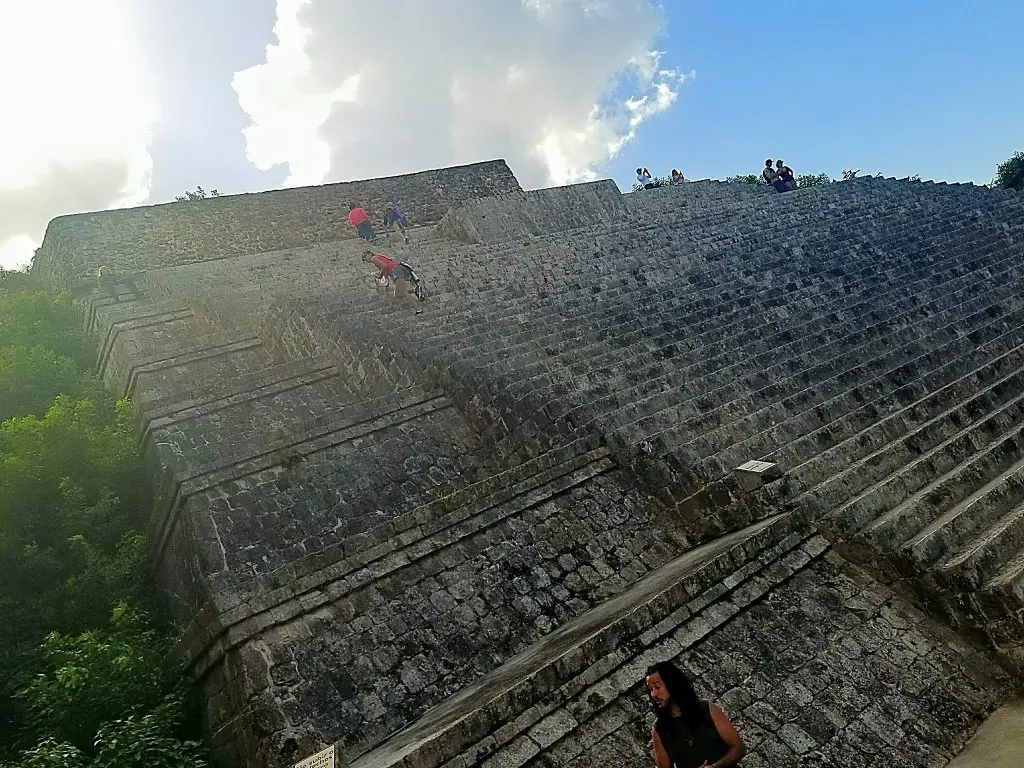
Upon ascending the pathway by the entrance, the Pyramid of the Magician is the first structure you see capturing both your vision and imagination. Even though an ancient underground water storage system — known as a chultune — is typically the first stop on any comprehensive tour of Uxmal, our attention is often arrested by the sheer size and striking elegance of the Magician’s Pyramid.
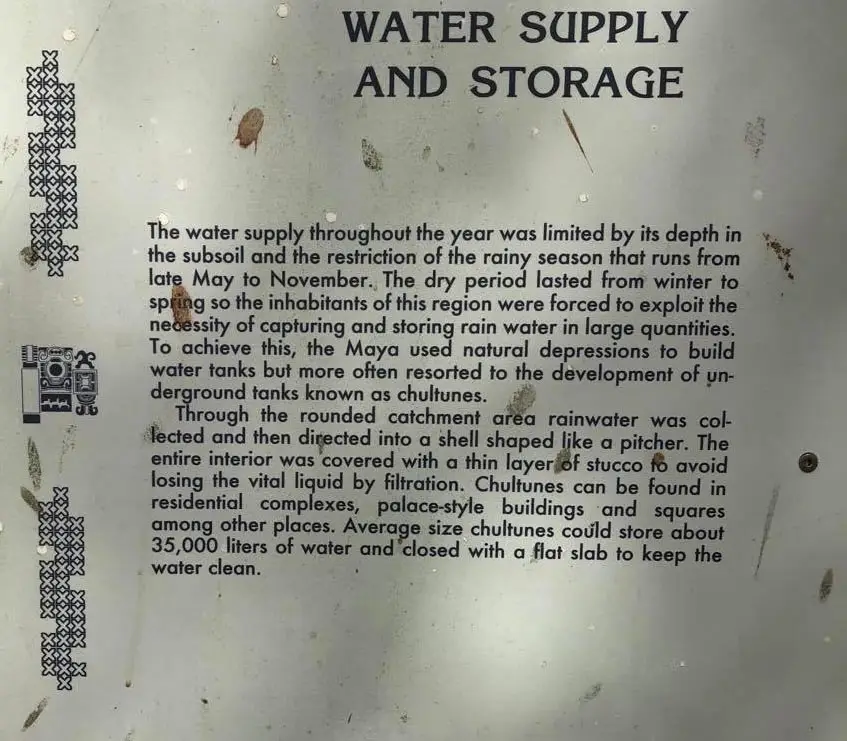
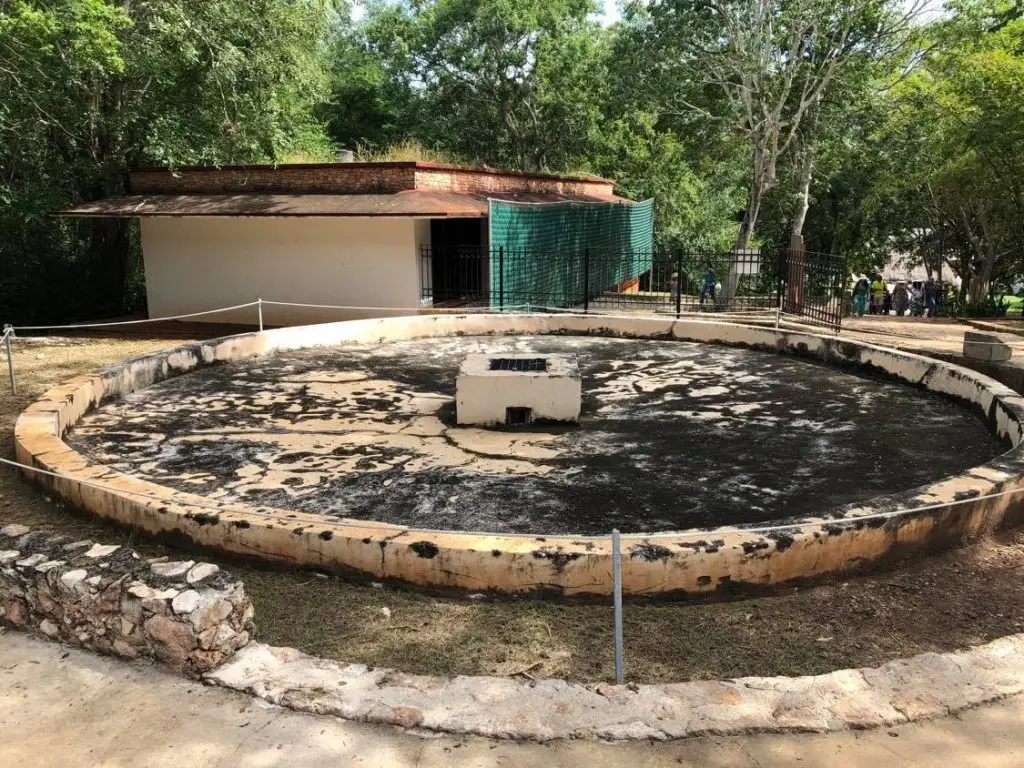
Its distinct elliptical base — unlike the square or rectangular base of most pyramids — supports an unusual oval-shaped body that stands in silence despite the fact its big mouth remains wide open. A Bigmouth? Yes! Its upper facade actually forms a face that not only gave access to its interior but still gives the pyramid a vital life force.

Each morning the rising sun is swallowed by the monster’s mouth in the east before recycling to the west en route for retirement in the underworld, Xibalba. The more ornate western staircase rises at an imposing 60-degree angle leading to another face fashioned in Chenes-style that could either be the rain god, Chaac, or more likely the Witz monster and it aligns precisely with the sun during Summer Solstice. Talk about having eyes in the back of one’s head! Overall it’s composition gives us the impression that it’s a giant thatched roof from traditional Maya homes representing the ultimate expression of the cosmos and divine perfection on earth.
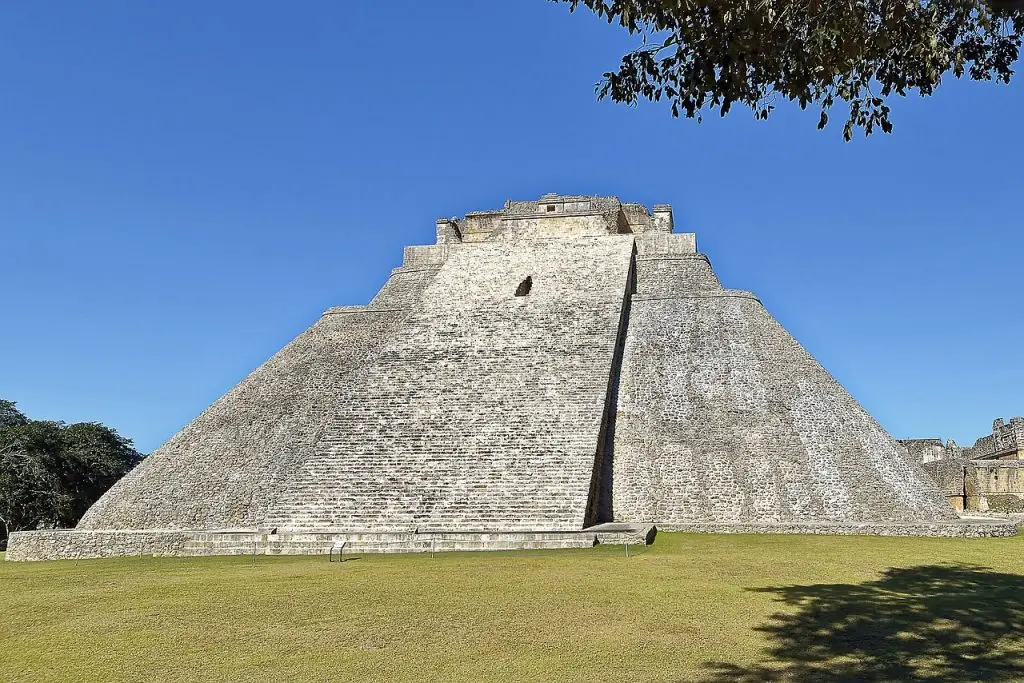
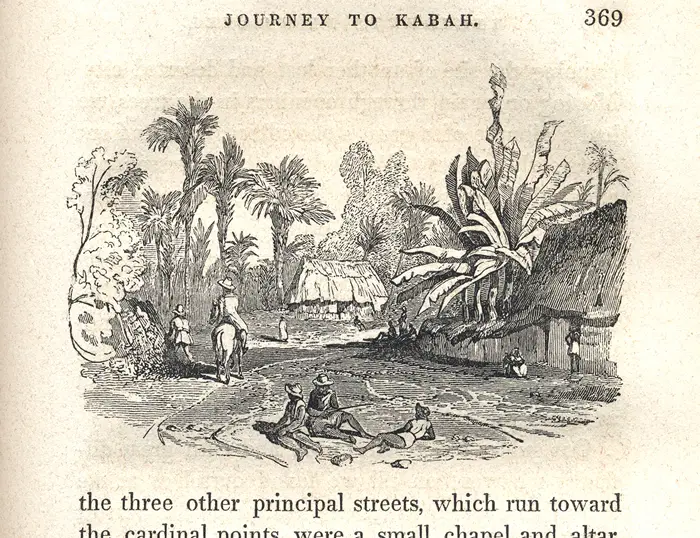
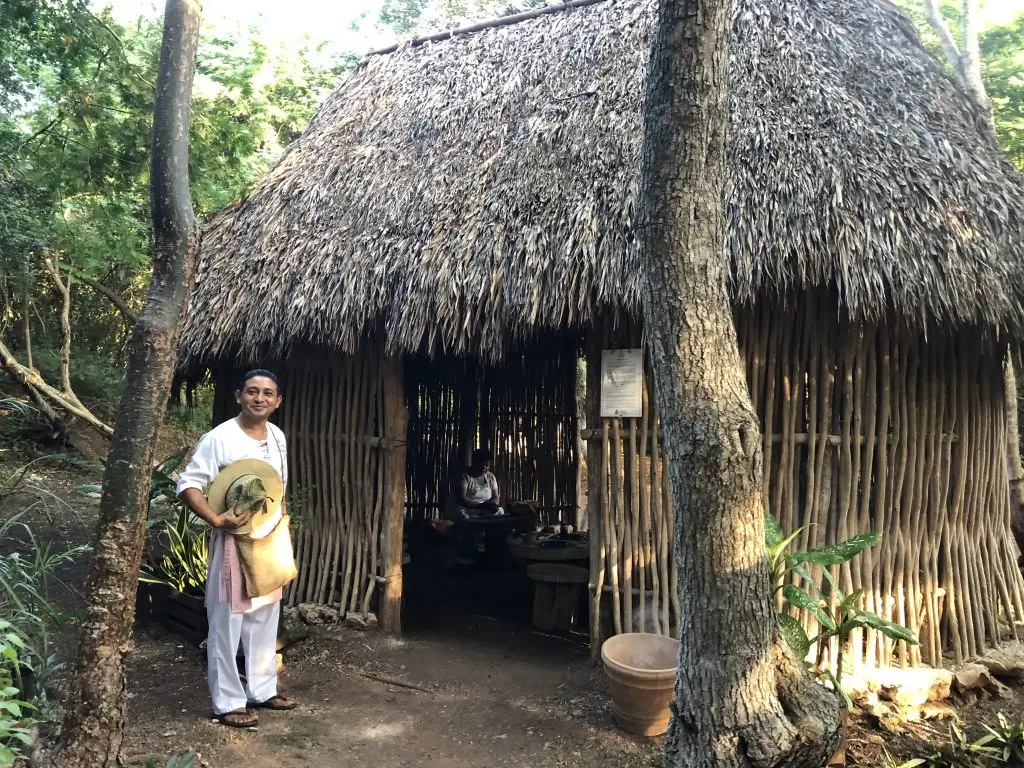
“The pyramid is an image of the world; in turn, that image of the world is a projection of human society. If it is true that man invents gods in his own image, it is also true that he sees his own image in the images that the sky and the earth offer him. Man makes human history of the inhuman landscape; nature turns history into cosmogony, the dance of the stars."
— Octavio Paz Tweet
The Pyramid of the Magician (Pirámide del Adivino) is also known as the House of the Magician and the Soothsayers House all of which derive from an indigenous oral tradition officially known as The legend of the Goblin of Uxmal but more commonly referred to as The legend of the Dwarf King of Uxmal. Goblins are typically portrayed as grotesque creates from European folklore whereas Dwarfs have shared an exhaulted status in Mesoamerica since the time of the Olmec civilization. Dwarfs were also venerated in Egypt as evidenced by the Egyptian neter, Bes. I suggest we drop Goblin and just stick with the Dwarf of Uxmal.
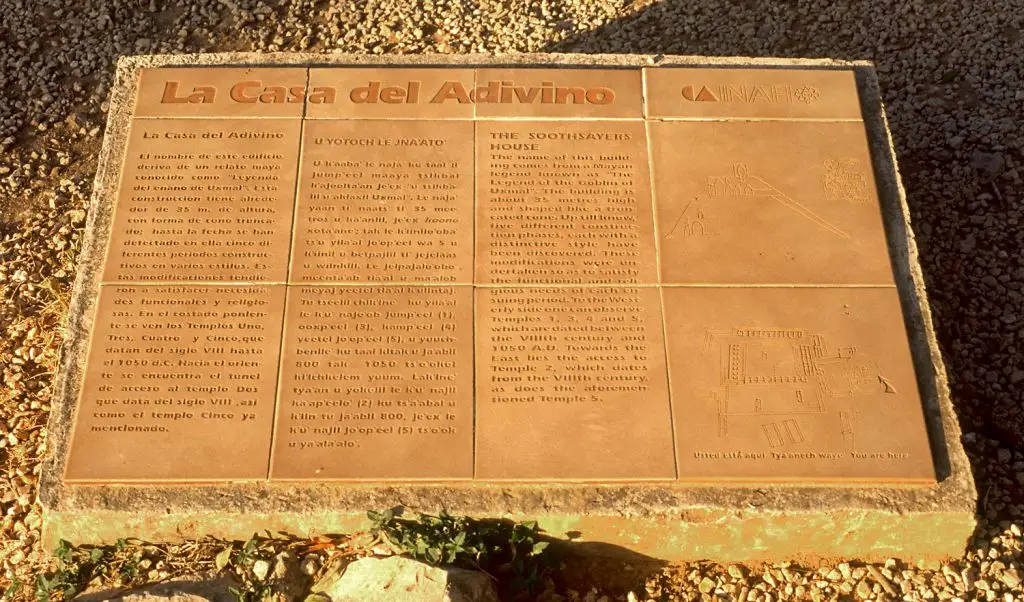

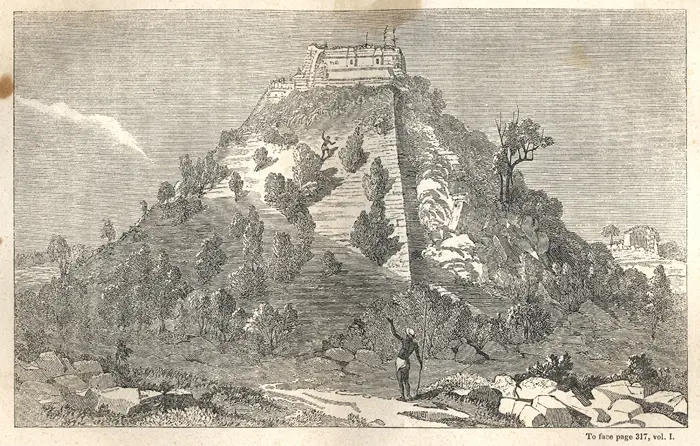
The first written account of the legend of the Dwarf was officially registered in 1840 by the 19th-century American explorer, John Lloyd Stephens who received the oral tradition from a local Maya native while exploring Uxmal. Variations of the legend have since been published and today, the teaching is still transmitted by mouth in the homes of modern Maya.

Even though different versions of the same story are perpetuated, the underlying principles remain the same. One wonders if the myth is merely a product of 16th-century Spanish colonizers who told stories that — not unlike their religion— eventually held sway and became amalgamated with indigenous traditions.
If indeed the legend pre-dates the arrival of the Spanish conquest, then it becomes reasonable to conjecture that the so-called myth may not only be rooted in cosmology, the many myths of ancient cultures the world over, but also may have a legitimate history linked to the lost origins of the Pyramid of the Magician.
The Pyramid of the Magician was believed to be the product of ancient magic. According to legend, it was built in a single night by a dwarf with the help of an old woman who possessed supernatural powers in response to a challenge issued by the king of Uxmal.
Wikipedia offers a paraphrased version of the legend sourced from a 1974 academic work published by Albuquerque: University of New Mexico Press entitled Stonework of the Maya by Edward Ranney, however, this version is not entirely true to the original account published by John Lloyd Stephens. When in doubt, it’s best to go straight to the source. You can read the official account word-for-word exactly as it was first written by Stephen’s in his now famous Incidents of Travel in Central America, Chiapas, and Yucatan as published by Harper in 1845.
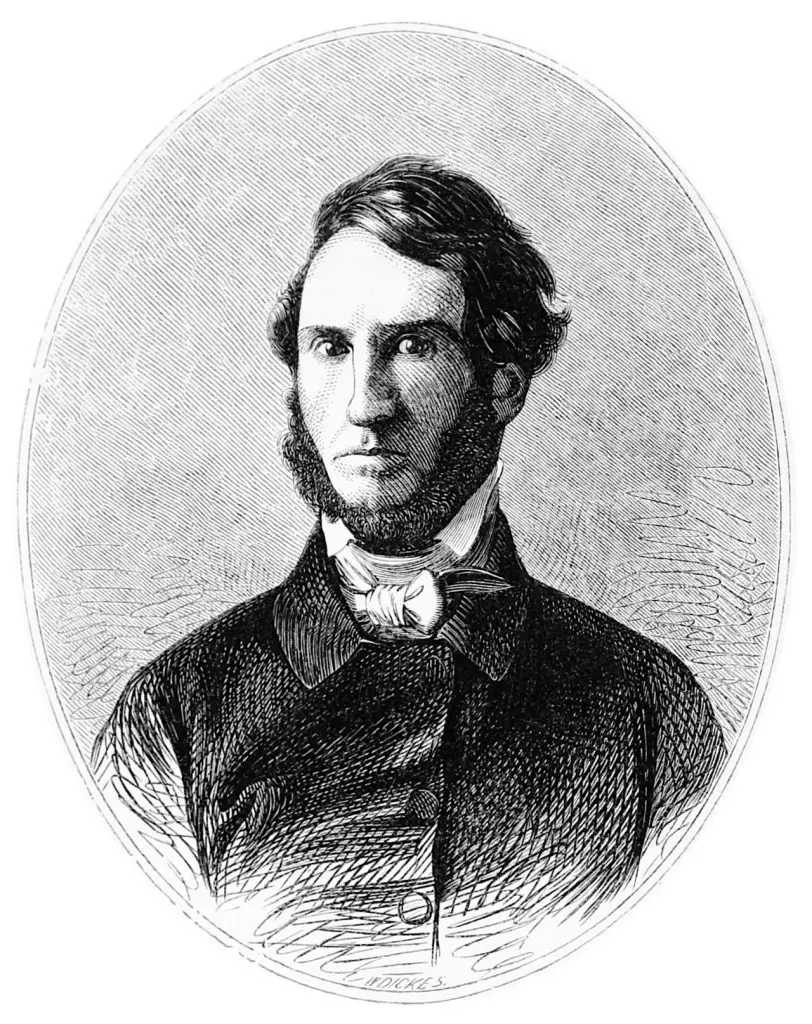

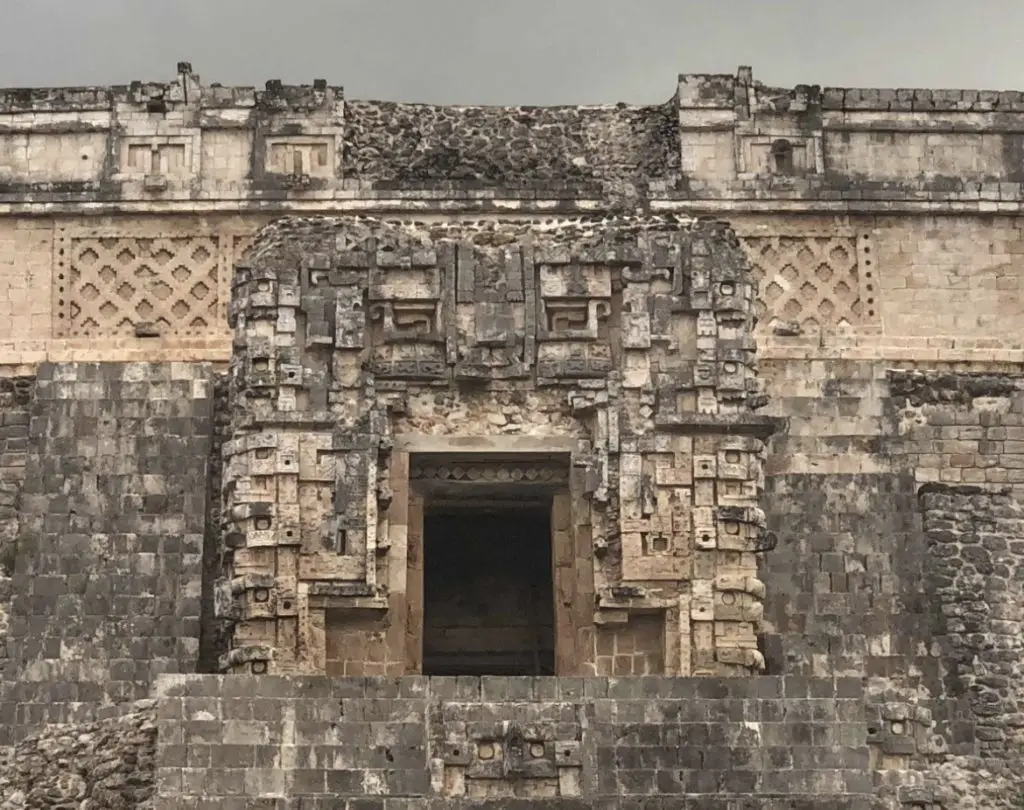
“There was an old woman who lived in a hut on the very spot now occupied by the structure on which this building is perched, and opposite the Casa del Gobernador (which will be mentioned hereafter), who went mourning that she had no children. In her distress she one day took an egg, covered it with a cloth, and laid it away carefully in one corner of the hut. Every day she went to look at it, until one morning she found the off hatched, and a criatura, or creature, or baby, born. The old woman was delighted, and called it her son, provided with a nurse, took good care of it, so that in one year it walked and talked like a man; and then it stopped growing. The old woman was more delighted than ever and said he would be a great lord or king. One day she told him to go the house of the Gobernador and challenge him to a trial of strength. The dwarf tried to beg off, but the old woman insisted, and he went. The guard admitted him and flung his challenge at the Gobernador. The latter smiled and told him to lift a stone of three arrobas, or seventy-five points, at which the little fellow cried and returned to his mother, who sent him back to say that if the Gobernador lifted it first, he would afterward. The Gobernador lifted it, and the dwarf immediately did the same. The Gobernador then tried him with other feats of strength, and the dwarf regularly did whatever was done by the Gobernador. At length, indignant at being matched by a dwarf, the Gobernador told him that, unless he made a house in one night higher than any in the place, he would kill him. The poor dwarf again returned crying to his mother, who bade hi, not to be disheartened, and the next morning he awoke and found himself in this lofty building. The Gobernador, seeing it from the door of his palace, was astonished, and send for the dwarf, and told him to collect two bundles of eogoiol, a wood of very hard species, with one of which he, the gobernador, would beat the dwarf over the head, and afterward the dwarf should beat him with the other. The dwarf again returned crying to his mother; but the latter told him not to be afraid, and put on the crown of his head a tortillita de trigo, a small thin cake of wheat flour. The trial was made in the presence of all the great men in the city. The Gobernador broke the whole of his bundle over the dwarf’s head without hurting the little fellow in the least. He then tried to avoid the trial on his own head, but he had given his word in the presence of his officers and was obliged to submit. The second blow of the dwarf broke his skull in pieces, and all the spectators hailed the victor as their new Gobernador. The old woman then died; but at the Indian village of Mani, seventeen leagues distant. There is a deep well, from which opens a cave that leads underground an immense distance to Merida. In this cave, on the bank of a stream, under the shade of a large tree, sits an old woman with a serpent by her side, who sells water in small quantities, not for money, but only for a creature or baby to give the serpent to eat; and this old woman is the mother of the dwarf. Such is the fanciful legend connected with this edifice, but it hardly seemed more strange than the structure to which it referred.”
- John Lloyd Stephens, Incidents of Travel in Central America, Chiapas, and Yucatán Tweet
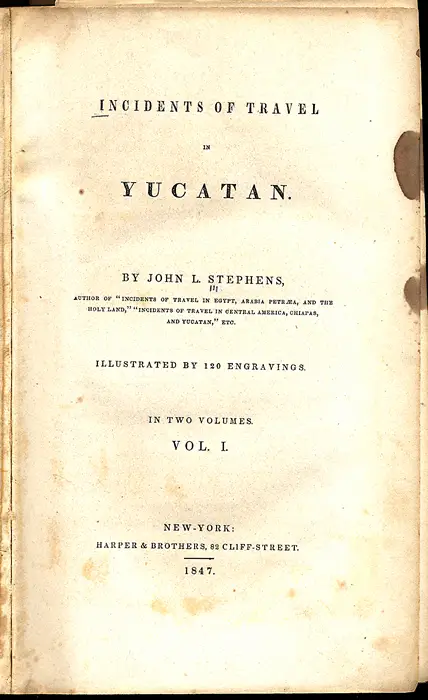
Some researchers and historians have identified the dwarf of Uxmal and the old woman with the Maya deities Itzamna and Ixchel, but there is no compelling evidence to prove this beyond a reasonable doubt.

While legend has it that the tallest structure in Uxmal was built in a single night, archaeologists have determined the Pyramid of the Magician was created during the successive construction of five temples at different levels and in different styles over the span of at least 300 years. In fact, radiocarbon dating performed on the pyramid produced a date of 569 AD.
I can understand the reasons why scholars are quick to dismiss the oral tradition, but I’ve always wondered if the legend could be referencing not the entire pyramid, but the smallest building on top, Temple V also known as The House of the Magician or Soothsayer. This building dates from the ninth century during the last stage of construction and gives the pyramid it’s overall height. In his account, Stephens was not specific when merely referencing a “loft building”. Perhaps the Magician was following the Mayas traditional practice of superimposition, building ontop of existing structures thus making “a house in one night higher than any in the place”.
Even if there is any truth to the legend, it does little to provide us with an explanation for the “magic.” We lack the understanding for how such master craftsman could be achieved in a single night in the same way archaeologists lack sufficient answers for the evidence of a lost technology in ancient Egypt. And yet, there are numerous legends of little people building astonishing structures in a single night, such as the Menehune of Hawaiin legend who alledgely built the ancient heiaus (Hawaiin temples) working only during the night. Edward Leedskalnin constructed coral castle working only at night. As a mystic in skeptics clothing, I like to keep an open mind to the many unexplained ancient mysteries at sacred sites that conetinue to engage serious travelers the world over.
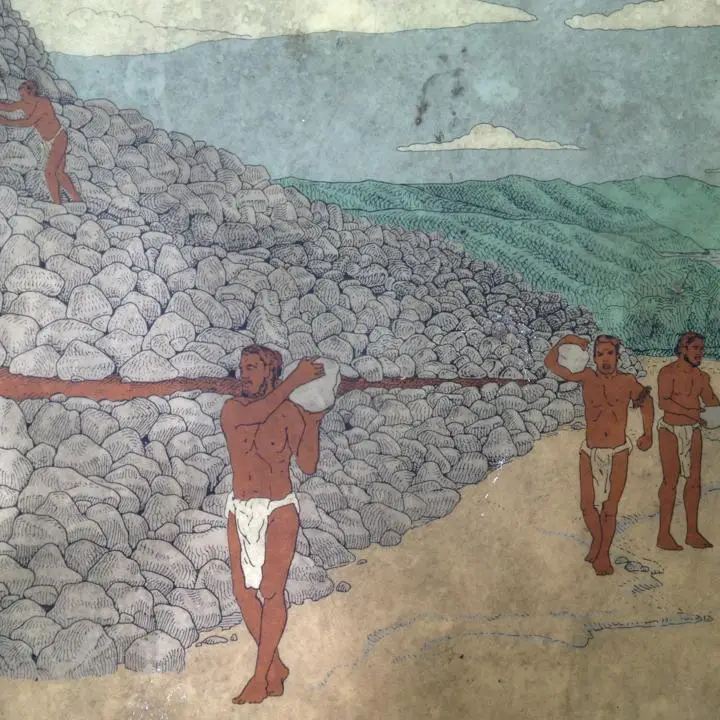

An older building hidden away from public view exists in Uxmal known as the House of the Old Woman which may be connected to the character of the same name in the legend although, we know it derives from a mutilated statue of an old woman found lying in front of it. Could it be possible that this pyramidal structure was the original pyramid referenced in the oral tradition, but somehow got lost in translation before reaching Stephens?
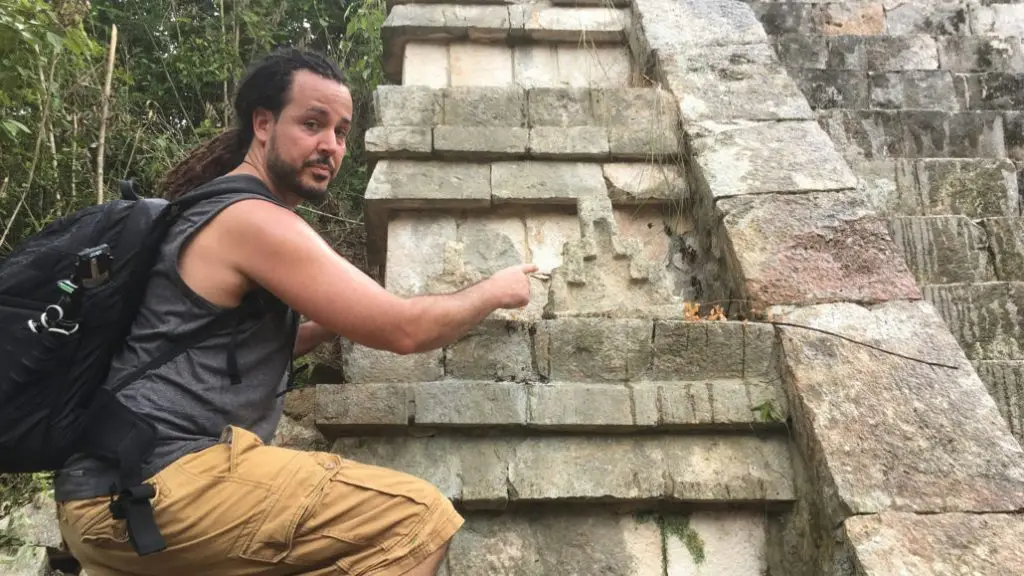
During an on-site investigation I noticed how the exterior steps of this pyramid were extremely narrow — even for the Maya — and by no means ideal for average-sized foot. Further, its interior construction requires a human of average height to actually duck down and almost crawl through in order to enter its inner sanctum. When I inspected the site, I received the impression that this small pyramid was built for little people. You’ll have to take my word for it, though, as tourists are no longer allowed to come near this pyramid let alone enter inside it.


Among the earliest detailed accounts of the ruins in Uxmal which included illustrations of the Pyramid of the Magician, the Nunnery Quadrangle, House of the Turtles in Uxmal and an unfinished drawing of the Governor’s Palace, was published in 1838 by pioneering explorer, Jean-Frederic de Waldeck. More than half a decade before the legend of the Dwarf king was told to Stephens, Waldeck was already first on the scene to explore Uxmal, which he renamed “Itzalane,” when he first documented the site in 1835.
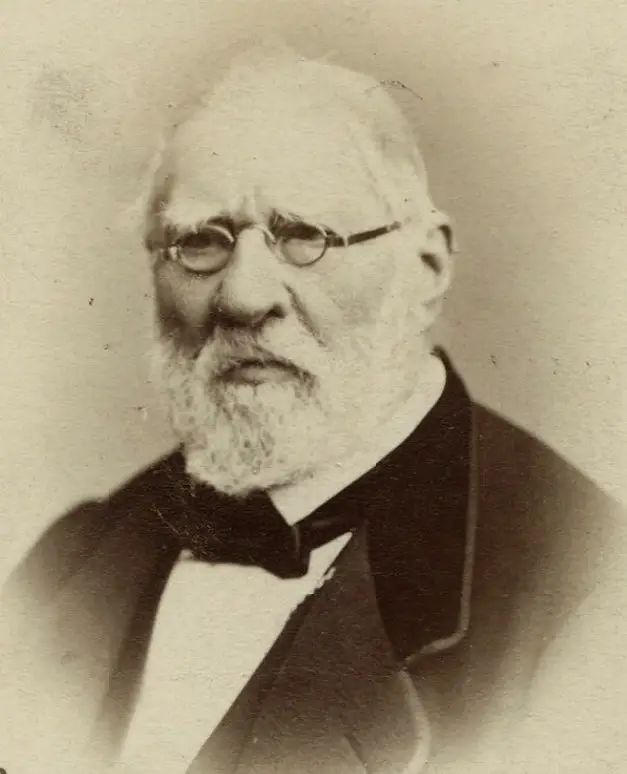
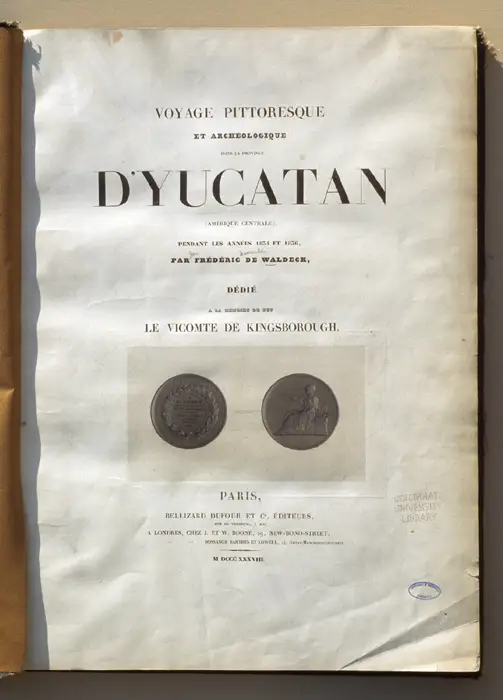

The structure we know today as The Pyramid of the Magician was originally named, “Kingsborough Pyramid,” by Jean Frederic M. de Waldeck, honoring his financial investor, Lord Kingsborough.
It wasn’t until over half a decade later when Austrian diplomat, Baron Emmanuel de Friedrichstall, ventured into the jungles of the Yucan that the Pyramid of the Magician was officially documented for a second time. During that same year – 1841 – early Yucatan explorers, John Lloyd Stephens and artist Frederick Catherwood – who are widely credited for the bringing the Maya civilization to light – finally stumbled upon Uxmal. Why the original name given by Waldeck, “Kingsborough Pyramind” was never honored is beyond me but, lucky for us, it didn’t stick, otherwise this blog would be titled The Kingsborough Pyramid. If you feel the same way I do, you’ll agree that there issomething about the name that just doesn’t have the same appeal as the Pyramid of the Magician.
In 1860 Désiré Charnay took the very first photograph of the Pyramid of the Magician in Uxmal in 1860.


Following Désiré Charnay, between the years of 1873 and 1881, Augustus Le Plongeon and/or his wife, Alice Dixon Le Plongeon took the next series of photographs of the Pyramid of the Magician. Of particular interest are Le Plongeon’s detailed photographs of the upper temple of the Pyramid of the Magician otherwise known as Temple V or the House of the Magician. Below is a collection of Le Plgongeon’s photos curated by Charles S. Rhyne Professor Emeritus, Art History Reed College and scanned from high quality 35mm slides provided by the Research Library, Getty Research Institute. The Getty received the photographs when they acquired the collection of famed occultist, Manly P. Hall. As a proponent of Le Plongeon’s work, Hall purchased the ground breaking collection of photographs. Alice Dixon appears for scale in many of the photos.

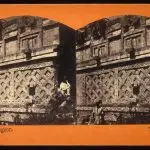
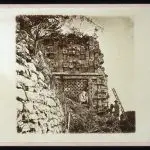
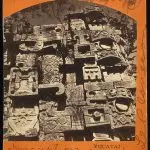


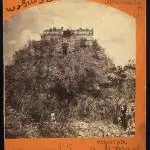


According to Augustus Le Plongeon, proportions relating to the “mystic numbers” three, five and seven, were intentionaly encoded by the ancient architects into the the arches of Temple V of the Pyramid of the Magician in Uxmal. Those same proportions, he stated could also be found in tombs in Chaldea and Etruria, in ancient Greek structures and as part of the Great Pyramid in Egypt. His theory was that the ancient Maya pre-dated and influenced other civilizations such as the legendary Atlantis which in turn transmitted the teachings into Egypt. While I may not agree with all of Le Plongeon’s theories, without question, his photographs are a major part of the modern history of the Pyramid of the Magician.
The Pyramid of the Magician oozes with complexity by combining five different structures from different periods with different styles to form a single harmonious whole.
It was a profound procedure and customary practice for the ancient architects who superimposed structure upon structure. The master builders decommissioned the magic of the original temple by ritually burying it as a symbolic seed from which new life in the form of a new temple would grow on top of its ancient predecessor. The oldest structure of the Pyramid of the Magician is buried and obscured by stone. Only by means of forcing their way through were the archaeologists able to gain entry into the older temples which till today are only partially excavated.
The final phase of construction for the Pyramid of the Magician took place in the tenth century with the addition of the upper level, but to unravel the complexities of this pyramid we must start at the very beginning.
The Pyramid of the Magician was built between the sixth and tenth centuries AD according to Marta Foncerranda del Molina based on a radiocarbon dating, stratigraphy and the style of architectural elements. However, this date is disputed by other scholars. Temple I is located on the lower platform on the west side of The Pyramid of the Magician and it dates to 569 AD, although this date was later corrected to 590 AD. While some scholars such as Foncerranda appear to have a penchant for pushing the pure Puuc-style architecture back to the sixth century, Jeff Kowalski and numerous others argue that the date of 569 AD is likely too early.
The most compelling piece of evidence is a date of 569 AD from a sample of a wooden lintel taken from the Temple I, a temple near the ground level plaform composed of two vaulted ranges with five rooms separated by two traverse vaults all of which is hidden from view due to be covered by the oval pyramid base.
As Herbert J. Spinden has reasonably pointed out, radiocarbon dating of the wooden lintel could potentialy be off by 240-260 years depending on exactly where the sample of wood was taken from, whether interior or near outer edge of the log. In other words, if the sample was taken from the interior part of the log then the true date of Temple I could be 250 years later. Rather than 569 AD, the true date of Temple I should be ninth century AD – around 810-850 AD – a date that better matches its Puuc-style facade.
While the leading authorties can’t seem to agree on a begining date for the construction of the Pyramid of the Magician, without question, the final phase of construction took place in the tenth century AD.

The first phase of construction began with Temple 1 in the sixth century with successive layers following over the course of the next few centuries. The first temple is mostly hidden within the oval base however, some surving portions are partially exposed on the west side of the pyramid where alternating panels and groups of colonnades can still be observed. Excavations inside this temple revealed a key piece of evidence in the form of a wooden lintel.

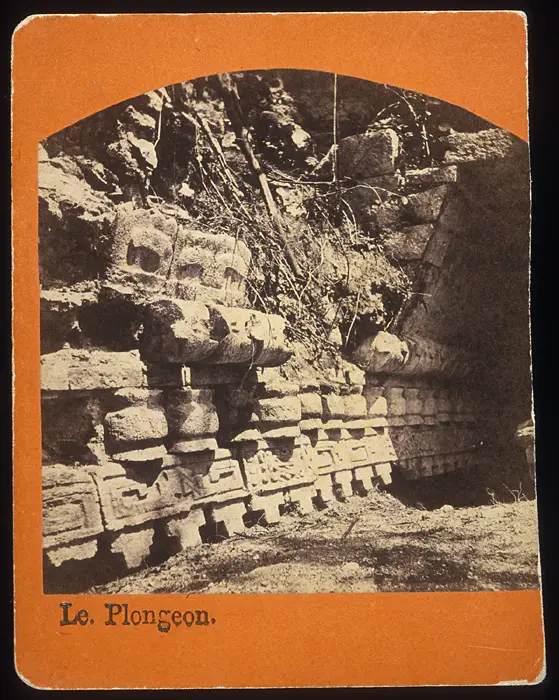
Radiocarbon dating was instrumental in supplying another avenue to establish Puuc chronology however, the radiocarbon date seems to run somewhat earlier than other evidence. The wooden lintel discovered inside Temple I dated to 569 AD, although later corrected to a date of 590 AD. Some scholars dispute the proenience and the conditions under which the sample was taken and argue that it could be up to 250 years later than the original results show. If true, a date of 810 to 850 AD better matches the developed Puuc-style of the facade. The early dates are troubling because, as E. Wyllys Andrews, Professor of Anthropology in the Stone Center for Latin American Studies at Tulane University has pointed out, the average fully developed Puuc style archiecture from Yucatan dates to 713 AD. According to Cesar A. Saenz, the cermaics discovered during explorations in the base of the Pyramid of the Magician date from sixth to tenth century, but the majority of pottery corresponds to 900-1000 AD. Inscriptions on a stela may correspond to 790 to 810 AD.


A well-known sculptural head, “The Queen of Uxmal”, — probably representing a man — was originally found located on the main facade of Temple I but is now on display in the National Museum of Anthropology. The sculpture depicts the portrait of a ruler appears between the gaping jaws of a fanciful serpent with nose-plugs and featured eyelids. The initiate has carried out a ritual where he emerges reborn from the mouth of the serpent. The individual scarification pattern marking his right cheek symbols the rites.
The second temple was identified as early Puuc-style because it has roof comb architectural elements. The temple can be accessed by an opening on the east side of the pyramid where columns that support the central chamber can be observed.

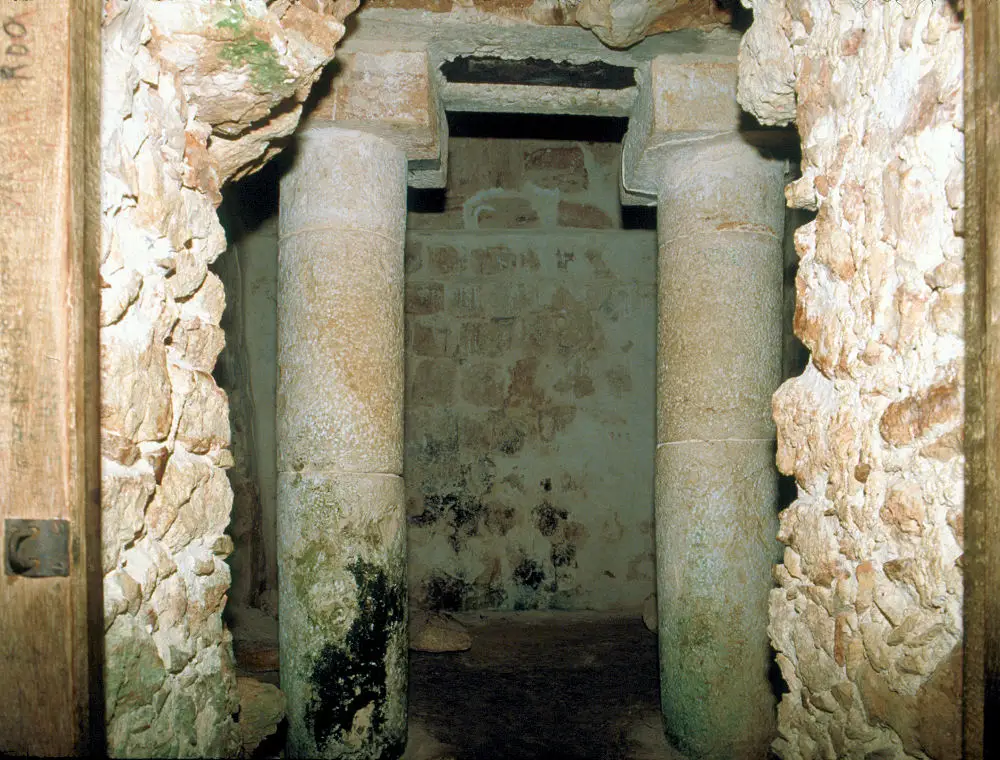
The third temple is a small antechamber but isn’t visible because it was built on the rear of the second temple before being covered by the fourth temple. Inside the antechamber is a small altar with a throne in the form of a Chaac figurehead.
Temple four is the most preserved, most decorated and most likely a Puuc copy of the earlier Chenes-style. The ancient architects pay homage to the older tradition as the temple can be entered through the jaws of a Chaac or Witz monster mask making up the Western facade. Eight masks of Chaac on both corners of the entrance and lattice ornamentation adorn he exterior of the temple.


The fifth temple is also known as the House of the Magician or Soothsayer. It was added on top of fourth temple requiring new staircases on both sides of Temple 4 and consists of three ornate chambers. A local native informed John Lloyd Stephens that the stairway was known as “Stairways to the Gods” and used for ceremoniously climbing towards the sacrificial altar.
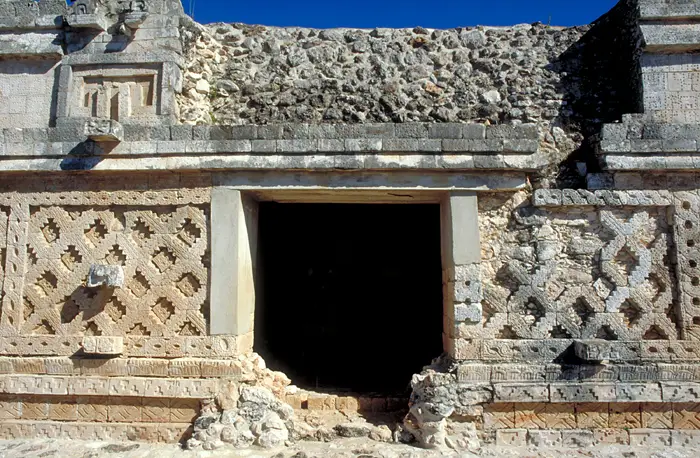

We can count twelve masks on each side of the stairs and two more at the top center giving us a total number of twenty-six. When multiplied by two it gives us the number fifty-two. The stairs are at a steep 60° angle and if we take the time to count them we arrive again at the number fifty-two. Since we find the number fifty-two encoded in the temple the question becomes what were the Maya trying to convey?
One of the seven basic Hermetic principles, which are the basis to sacred science and the key to all phenomena is the principle of cause and effect which states that nothing happens by chance. Everything happens according to law so it comes as no suprise that the Haab and Tzolkin calendars of the Maya would coincide every 52 years. For the ancient Maya, this cycle of time was known as a “bundle” and it meant the same for them as our century does to us.
Every 52 years the ancient Maya would repeat a ceremony for Muluc, associated with Chaac and water, the most sacred of natural forces. Represented by water sign, Muluc expressing the idea of hidden potential or inner potential. It is hidden opportunities that can give us strength in the most difficult of times. All praise due to the rain god, Chaac, for whom these temples are are consecrated too.


Desmond, Lawrenc G. “Stereo-Photogrammetric Documentation of the Adivino Pyramid at Uxmal, Yucatan”. (Online resource) 12-24 Mar. 1999. Retrieval 26 Oct. 2006 https://web.archive.org/web/20060907110146/http://maya.csuhayward.edu/archaeoplanet/LgdPage/Adivino99SumRpt.htm
Helfritz, Hans. Mexican Cities of the Gods: An Archeological Guide. New York: Praeger, 1970.
Kowalski, Jeff K. The House of the Governor: A Maya palace at Uxmal, Yucatán, Mexico. Norman : University of Oklahoma Press, 1987.
Li, Hans. The Ancient Ones: Sacred Monuments of the Inka, Maya & Cliffdweller. Banaras: City of Light, 1994.
Paz, Octavio. The Other Mexico: Critique of the Pyramid. New York : Grove Press, 1972.
Wikipedia, https://en.wikipedia.org/wiki/Pyramid_of_the_Magician
Ranney, Edward. Stonework of the Maya. Albuquerque: University of New Mexico Press, 1974.
Stephens, John L. Incidents of Travel in Central America, Chiapas, and Yucatán Volume I. New York: Harper Publications, 1845 https://archive.org/details/incidentstravel38stepgoog/page/n15/mode/2up
Stierlin, Henri. Living Architecture: Mayan. Fribourg: Office du livre, 1964.
Foncerrada de Molina, Marta. Fechas de radiocarbono en el area Maya. Estudios Cultura Maya, 1964
Spinde, Herbert J. A Study of Maya Art. Memoirs of the Peabody Museum of American Arcaheology and Ethnology, Harvard University 6. Cambridge, Mass 1916.
In-field investigation conducted by Anyextee, Adept Expeditions
Reed College https://www.reed.edu/uxmal/galleries/Thumbnails/Uxmal/Uxmal-Magician.htm
August 19 – 29, 2026
Join bestselling author & ancient mysteries YouTuber Anyextee to explore lost civilizations, uncover ancient enigmas, and awaken your inner seeker — all in 11 unforgettable days across Peru & Bolivia.
September 16 – 27, 2026
Most people only see the surface of Egypt—its pyramids, temples, and artifacts. But there’s another Egypt—encoded in stone, veiled in myth, and reserved for those ready to look deeper. This is your opportunity to peel back the veil.
October 2 – 12, 2026
Join Matt Sibson (Ancient Architects), alongside bestselling author and investigative explorer Anyextee, for an expert-led journey across Turkey—home to some of the oldest and most significant archaeological sites in the world.